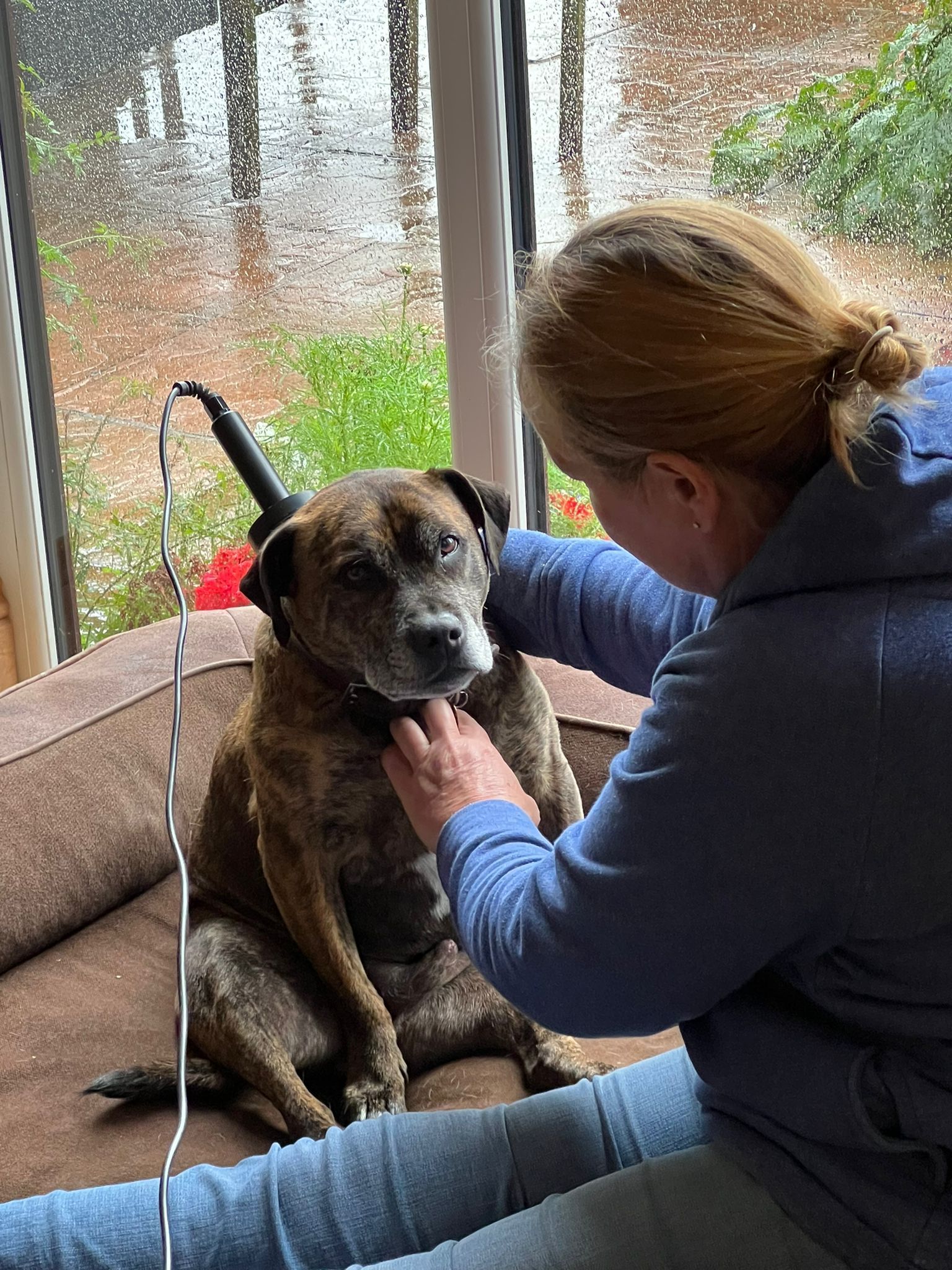WHY MIGHT MY DOG NEED PHYSIOTHERAPY?
Any animal is susceptible to knocks, sprains, strains, injury, stiffness, or may require surgery. Working and athletic dogs particularly, are prone to musculoskeletal injury which can be managed with the help of physiotherapy and appropriate exercise. Targeted treatment at the time of injury lowers the risk of compensatory problems and can help maintain musculoskeletal health into old age. Electrotherapies such as laser, ultrasound and pulsed magnetic field are particularly useful for injury or post surgical management.
Wendy specializes in routine care treatments for older dogs - they have been known to go from stumbling around stiffly to having geriatric zoomies around the garden after a session!
Please note, your dog may appear happy and willing despite being in pain, so routine 'MOT' sessions are useful for picking up any changes in their musculoskeletal health, as well as being a nice treat.
WHAT TO EXPECT
Veterinary consent
The dog must be registered with a vet prior to my visit. Your vet is the only person qualified to diagnose, treat and prescribe medication, and holds vital health records, which sometimes may influence the suitability of physical therapy. For routine wellbeing or performance maintenance visits it is not necessary to contact your vet, but if your dog is being seen to help with healing of an injury, management of musculoskeletal conditions, or rehabilitation, it is important to seek guidance from your vet so as to ensure the best outcome. If your dog has regular visits, it also means that injury can be prevented through early detection of subtle changes in their body, and referral to your vet if necessary for appropriate diagnosis and treatment.
History
A full history will be taken prior to seeing your dog. There are many factors that can contribute to physical problems, so getting 'the big picture' will help determine the most appropriate physical therapy and subsequent management/exercise programmes for you to ensure the most beneficial outcome.
Assessment and treatment
Please ensure your dog is clean and dry - a thick layer of mud/wet coat can make it impossible to palpate and deliver treatment effectively. Ideally there should be enough flat area to observe the dog moving, and a quiet room for the session. A quiet, calm environment is ideal, so consider booking your appointment when there is least likely to be a lot of activity going on. Please do not exercise your dog immediately before a visit - not only is it difficult to apply techniques to an excited dog, but warm muscles and adrenaline can mask any discomfort.
An initial assessment and hands-on session could take up to one hour, and subsequent visits usually between 20 and 40 minutes. Each dog and situation is different, so nothing is set in stone. If a course of treatment for a specific injury or condition is needed, short visits can be arranged to deliver the appropriate modality, or some of my equipment is available to hire.


Copyright © All Rights Reserved.
BackActive Animal Physiotherapy 2023
Photo credit: Majority of main photos courtesy of Joan Gilchrist
